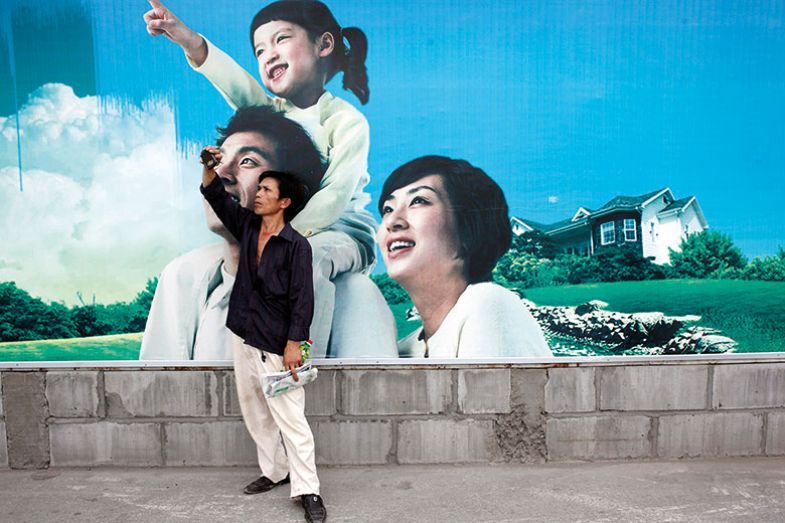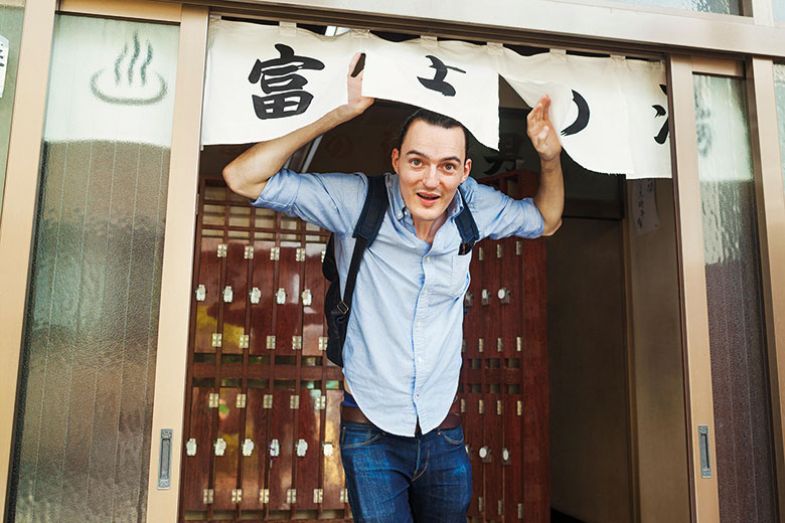Browse the THE Asia University Rankings 2020 results
The Hong Kong University of Science and Technology (HKUST), one of the top young academic institutions in the world, is nestled in the hills of the New Territories, the rural part of Hong Kong that borders mainland China. It is perfectly placed as an example of how different demographic trends have affected Asian higher education.
On the Hong Kong side of the border is a city with one of the lowest birth rates in the world. Its annual population growth rate of just over 1 per cent is far below the replacement rate, similar to those of other affluent East Asian states such as Japan, South Korea, Taiwan and Singapore. All those places have expressed alarm about a “demographic crisis” of too few young people to fill university spots. The Hong Kong government has warned that low fertility “may impact on socio-economic development”.
But on the mainland Chinese side of the border, just a half-hour drive away, is a nation that was so concerned about having too many babies that, from 1979 to 2015, it enacted one of the world’s largest social engineering experiments. China’s one-child policy, which was enforced with sometimes draconian measures such as forced sterilisation, was justified as a means to keep rural poverty in check so the country could boost education levels and spur economic development.

Stuart Gietel-Basten, a demographer and associate dean at HKUST and author of the 2019 book The “Population Problem” in Pacific Asia, warns that government social engineering of populations – whether aimed at increasing or decreasing the numbers of births locally – is insufficient in itself to keep university campuses filled with students.
“We’re always told that the population problem will be Asia’s Achilles heel, especially in the area of ageing and population decline,” he says.
“The national response by governments is either to push people to have more children or, even worse, creating a rhetoric of blaming women. But the reality is that these government policies are not working in Taiwan, South Korea, Singapore,” he adds, noting that even if birth rates were increased immediately, universities would begin to benefit only two decades down the line.
As for mainland China, it seems that the one-child policy actually did little to reduce birth rates; a recent paper in Plos One, co-authored by Gietel-Basten, developed a data-driven method to construct a model for a “synthetic China”, a sort of parallel reality in which the one-child policy was never implemented, and found that birth rates would have dropped anyway as a result of economic development.
That is one reason why the lifting of the policy a few years ago did not have the hoped-for effect of boosting fertility.
“By suggesting that the impact of the birth control policies may have been exaggerated in the past, we can better understand why the response to their relaxation has been relatively muted – or, at least, well below popular expectation,” according to the paper.
Jeff Kingston, director of Asian studies at Temple University’s Japan campus, has seen similar demographic problems across developed nations internationally.
“The college-age cohort across the world is about to drop off a cliff, and so already fierce competition will become more so,” he says. “Established universities offer degrees that confer status and access, but the second and third tier will be facing dire prospects.”
Syaru Shirley Lin, a political economist who teaches at both the University of Virginia and the Chinese University of Hong Kong, says that “pro-natal policies take decades to materialise so it's much too late to reverse the demographic trend now in Asia”.
“There are too many universities and not enough students; however, the universities are diverse in terms of specialisation and quality. Institutions that do not excel or have specialisation will be eliminated, and students will still be going from emerging markets to developed markets,” she said.
Lin adds that Hong Kong benefited from this trend in the past, while Japan ranks as the most favoured study-abroad country in Asia.
The East Asia economic boom began with the “Japanese miracle” after the Second World War, followed by the rise of the “four Asian dragons” (South Korea, Hong Kong, Taiwan and Singapore) from the 1960s to the 1990s. China’s emergence as a global superpower came soon after. During that period, there was an enormous expansion of the higher education sector, both in terms of quantity and quality.
The results of the region’s rapid development can be clearly seen in the 2020 Times Higher Education Asia University Rankings. Institutions from those six regional economic powers make up all the top 24 spots. Japan has the most ranked institutions with 110, followed by China with 81.
By the 1990s, however, university-age populations began to fall sharply in East Asia. And the Hollywood movie adage “if you build it, they will come” did not quite work out for many new institutions that had opened.
Katharine Moon, Edith Stix Wasserman professor of Asian studies at Wellesley College and author of the upcoming book New Koreans and the Future of Korea’s Democracy, says the rapidly declining numbers of young people in Japan and South Korea will amount to a loss of “millions” by 2025, when compared with the mid-1990s.
“In both countries, many universities and colleges have gone bankrupt and closed their doors or restructured through mergers,” she adds.
One of the reasons for this problem in the higher education sector is what Moon calls a “proliferation of tertiary educational institutions”. In South Korea, for example, higher education became something of a “boom industry”, with English-taught classes proving particularly popular.
With the exception of some legacy universities, East Asia’s higher education sector was in essence built in just 50 years.
In 1960, there was only one main institute of higher education in Hong Kong: the elite, colonial-era University of Hong Kong. Today, there are eight public universities as well as multiple private degree-granting schools, most of which opened or were granted full university status in the 1990s.
When Singapore became an independent nation in 1965, it had just one main institute of higher education, the University of Singapore (now the National University of Singapore). It was followed by the elevation of Nanyang Technological University (NTU) in the 1990s and four other institutions in the 2000s. The city state jumped from a level of economic development “quite similar to that of African countries to reach a level comparable to the best OECD countries” in just decades, according to a paper published by academics at NTU and the National Institute of Education.

Taiwan’s higher education development was even more dramatic. As Chuing Prudence Chou, professor of education at National Cheng-Chi University, wrote for the Brookings Institution in 2014, there were only seven higher education institutions in 1950, and total student numbers did not top 7,000. By 2012, the number of institutions had grown almost 20-fold to 163, with a student body of 1.25 million.
Keeping those universities full is proving to be a challenge. The Taiwan government reported in December that 132 university departments and institutes had failed to enrol a single local student in master’s or PhD programmes last year.
The Asian country showing the greatest recent rise in higher education is China. In the 2020 Asia ranking, Tsinghua University held its top spot, while Peking University, the University of Science and Technology of China, Zhejiang University and Shanghai Jiao Tong University all edged upwards. Top institutions in Hong Kong and Singapore either stagnated or dropped slightly.
Right now, China is in a demographic sweet spot as it transitions from a developing to a developed nation. It is moving past the problems of nations such as India, which has an enormous field of young people but vast rural poverty and a lack of funding for infrastructure and top global universities. At the same time, China is not suffering from the drop in birth rates seen in more affluent states such as Hong Kong and Singapore – at least, not yet.
Moon sees China as heading down the same demographic path as richer states in East Asia.
“For the past two decades, Japan, Singapore, South Korea and Taiwan have been global leaders in terms of low birth rates. China joined this club in recent years,” she says.
“In China, many private institutions of higher education struggle to stay alive, while large national universities might have to stay afloat by accepting more students from rural and inland areas rather than the urban and coastal populations who have been favoured.”

Universities have little control over government population policies or birth rates, so what is the solution to filling up reasonably new institutions amid a shortage of young minds? Experts say that policies that encourage cultural diversity, gender balance and greater openness to students of different ages could open doors.
In general, women are catching up in higher education enrolments at a global level, and many Asian institutions – particularly comprehensive, liberal arts universities – have healthy gender ratios.
However, top-ranked East Asian universities tend to be STEM-heavy, as many were originally polytechnics or technical colleges that were later elevated to university status, and these institutions are generally dominated by male students.
In South Korea, the Korea Advanced Institute of Science and Technology (KAIST) has a female-to-male student ratio of 20 to 80, according to THE rankings data, while Pohang University of Science Technology (POSTECH) has one of 23 to 77.
The University of Tokyo, ranked seventh in Asia, provided no figures to THE, but its website states that only one in five students there is female. Kyoto University, ranked 12th in Asia, has a female-to-male ratio of 24 to 76.
The figures are similar in China. Top-ranked Tsinghua University has a gender balance of 34 to 66, while Zhejiang University has a 23 to 77 ratio.
“Stopping disincentives that keep women out of the science and medical areas is crucial” to addressing the issue, says Temple’s Kingston.
He refers specifically to the case of Tokyo Medical University, which systematically rigged medical school exam scores to favour male candidates, according to a 2018 government investigation. A few years earlier, similar exam-rigging based on gender was discovered at law schools in China.
“This type of patriarchal bias is rife and remains a major obstacle to boosting the numbers of women in STEM,” Kingston says.
“A significant problem is the ongoing differential in the return on education. Women are less highly paid and less likely to advance into management. And that remains a major disincentive that universities can’t tackle on their own.”
Kingston adds that Asian universities need to “diversify their recruiting across the globe, offer data that show the value of a degree from that institution, and tailor programmes to address the needs and aspirations of an increasingly diverse student community”.
“It is important to seek out and succeed in niche areas that will help to insulate institutions from the declining numbers and to identify under-served areas and build relationships,” he says.

Simply encouraging more young people into classrooms does not seem to be the answer. According to Taiwan’s Chou, almost 70 per cent of Taiwanese citizens aged 18 to 22 are already in higher education, which is the second-highest rate in the world, behind only South Korea. For her, the problem is with the quality of education, not the quantity of admissions.
Moon says that to remain competitive, Korean and Japanese institutions should improve the quality of life for international students, “including sensitivity to foreign cultures, multicultural awareness for native students and cross-cultural communication”.
Governments should also make it easier for new overseas graduates to find meaningful employment, to counteract the effects of declining populations, she suggests.
“Many students naturally want to find jobs in their host countries since they grew accustomed to the educational standards and social communities at the host universities. But it is difficult for foreign nationals with university degrees to find and be hosted legally by employers,” she says.
Gietel-Basten recommends that universities branch out from traditional admissions systems that rely predominantly on cohorts coming straight out of the secondary school system, often via highly competitive entrance exams.
“The trend is to think, ‘We don’t have enough 18-year-olds, and our universities will go bankrupt,’” he says. “Yes, the number of 18-year-olds is down, but if their skill levels and ability to pay fees are increasing it can be effectively neutral in the end. If not, it means that unless they diversify the admissions pool, universities will have to reach more deeply into the pool of talent.
"Actually, the number of people from all age groups who wish to go to university, including older students, is going up.”
At the end of the day, the question for Gietel-Basten is whether it is more important to fill empty seats simply because they are there, or to offer quality learning and research.
“What’s the role of a university? To educate people,” he says. “And yet lifelong learning is still seen as a hobby – it’s not taken seriously. Do we really need to fill up our universities? How big do they have to be?”
Register to continue
Why register?
- Registration is free and only takes a moment
- Once registered, you can read 3 articles a month
- Sign up for our newsletter
Subscribe
Or subscribe for unlimited access to:
- Unlimited access to news, views, insights & reviews
- Digital editions
- Digital access to THE’s university and college rankings analysis
Already registered or a current subscriber? Login






